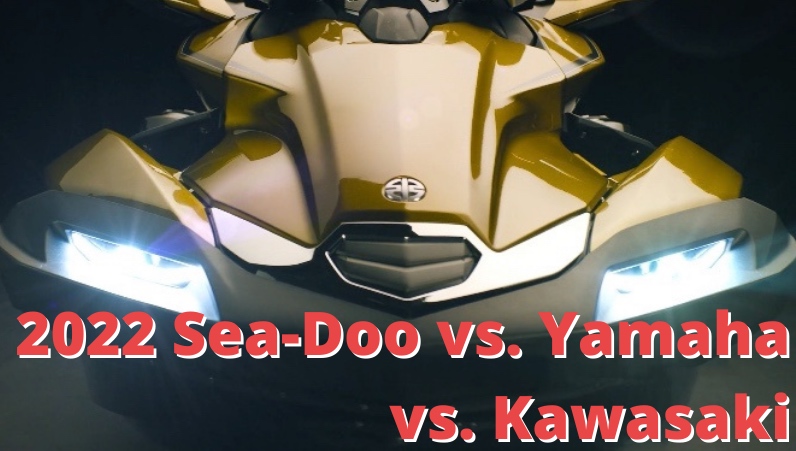The 2022 Sea-Doo vs Yamaha vs Kawasaki long post is in PDF format to make it easier to read. You can download it below.
2022 Sea-Doo vs. Yamaha vs. Kawasaki

Author
Steven
I started working at a power sports dealership in 2007, I worked in parts, service counter, and as a technician before moving to sales in 2013. I created StevenInSales.com in 2014 to answer common watercraft questions I would get from people. Now managing the site full-time, I continue to provide advice and web tools for my readers about watercraft. I've owned several watercraft, with a Sea-Doo Spark as my current main PWC.


Absolutely great article anxiously awaiting your 2023 comparison. Couldn’t get my hands on a 2022 anywhere, dealers are taking orders now for 2023. Got it narrowed down to 2-3 models but want your expertise in equation.
Thanks
I would lean more towards the GTI because of the seating height and how not wide the seat is. Plus, I find iBR system on Sea-Doo easier to understand, especially for new riders.
Thanks! We are a family of short people. I’m 5’8” and the tallest. Does that change anything for you you? Between those 2, do you prefer one over the other?
The gas tank isn’t a huge dealbreaker unless you do a lot of long rides. I find the GTI fits better and more comfortable, but others find the VX more comfortable. If you can, go to a dealership and see if they have a model you can sit on to see how it feels to you. Either way, you can’t go wrong with either one.
Hi. Thanks for this! Amazingly helpful. I’m torn between the GTI SE 170 and the VX Cruiser HO. Mostly lake use for family fun. They both seem great. Do you have a recommendation? Does the smaller tank in the GTI matter much?
Thanks!
Cruising and some rough water, go with the GTX. The Polytec hull can handle it, but GTX is just a slightly better ride for such things.
Fantastic writeup and such a time saver for us! I am trying to decide between GTI SE 170 and GTX 170. Will be more for cruising around. Sometimes trips between 1-2 hours. I like the deck room on the GTX but the poly tech hull on the GTI is really drawing me to it over the GTX.
Do you have any thoughts on the which hull is better? Half the time it will be spent on the ocean/inner coastal areas.
The higher you go the less HP you will have. If I do some rough numbers, you’ll probably lose 7hp to 10hp at 5,000 feet. You’ll notice a change in acceleration at this elevation, I would stick to higher HP for sure.
Thank you for article. Would you say the 60HP could be underpowered at higher elevation? 5000 ft? Not worried about top speed but acceleration.
Best PWC comparison article I have read. Thank you!
Nice is your C8 a Z51?
I would also like the Kawasaki with ALL THE GOODIES. I ALSO HAVE A C8 Corvette htc 3lt don’t race it just like to tool around in it.
Steve, thanks you were really helpful. I really like the new FX svho, also Sea Doo pro fish sport. Might have to buy what I can get quickest deals. Hope I can get what I want by3.18. My 86 birthday👍👍